As Global Action Plan has successfully taken a white paper to the UN calling for clean air to be recognised as a right of the child, Chloe Coules investigates why we need international recognition of the impact of air pollution on children and what changing human rights law could achieve.
‘I am a lucky mum,’ explains Jemima Hartshorn, founder of Mums for Lungs, ‘To date, my children do not have any visible symptoms from the high air pollution they are exposed to everyday just by living in London.
‘But I worry about them and lie awake at night, wondering whether their lungs will be stunted or if they are going to develop asthma, cancer or diabetes – which are all illnesses strongly linked to air pollution.’
Like Jemima, parents across the world are constantly confronted with the risks that air pollution poses for their children, and many of them are not so fortunate to have avoided its impact.
Every day around 93% of the world’s children breathe in air that is so polluted it puts their health and development at serious risk, according to WHO.
The unique vulnerability of children is leading campaigners to call for global recognition of the health crisis faced by current and future generations and the intrinsic human right to breathe safe air.
Global Action Plan is fighting to get the right to clean air recognised as part of the UN’s Convention on the Rights of the Child.
Désirée Abrahams, senior business manager at Global Action Plan, explains: ‘The UN Convention on the Rights of the Child was agreed in 1989, so it was a long time ago when the world was a very different place.
‘Even though Article 24 specifically discusses health, the policymakers who were drafting the Convention had not explicitly thought about air pollution, and so we need specific words in order for there to be responsibilities and duties placed on governments and the private sector to protect children from air pollution.’
Global Action Plan is visiting schools in Beijing, Delhi, London and Los Angeles as part of the ‘Freedom to Breathe’ campaign.
They hope to gather the support of 20,000 children to strengthen their call to the UN to acknowledge children’s right to clean air.
Hannah Battram, who is responsible for the Freedom to Breathe campaign, says: ‘The first step is to really make sure that children understand what the issues are and how it’s relevant to their health and wellbeing, but most importantly empowering them to be agents of change, and allowing them to raise their voices to make those changes to ensure they have a secure future.’
As more and more parents and children call for change to protect children from the threat of air pollution, Air Quality News discovers why children need special protections and what amending the UN Convention on the Rights of the Child could achieve.
How does air pollution affect children?
The effects of air pollution on children are wide-ranging and severe, starting before a child is even born.
Exposure to air pollution during pregnancy is linked to higher rates of premature birth and low birth weight, as well as problems with cognitive development, which have a knock-on effect on a child’s future educational achievement and ability to learn, socialise and play. Exposure to air pollution during infancy also significantly increases the risk of death during the first year of life.
As a child grows, so too does the impacts of air pollution on their health and wellbeing. It is well documented that there is a strong link between air pollution exposure in childhood and the development of respiratory illnesses, such as pneumonia, bronchitis and asthma.
This can be extremely dangerous, with almost one million children dying from pneumonia alone each year, and more than half of these cases directly linked to air pollution.
Aside from the obvious implications for a child’s health, the development of respiratory diseases can also have wider social impacts, with a study published in Environment Health highlighting that these respiratory conditions can lead to higher incidences of hospitalisation and doctors’ visits, reducing the affected children’s school attendance and normal participation in physical activities.
Exposure to air pollution can also affect how well a child learns, with a report by Global Action Plan finding that air pollution exposure at school can hamper a child’s cognitive function, including working memory, which will have a direct impact on how well a child performs at school and beyond.
Why are children especially vulnerable?
Children are much more vulnerable to the effects of air pollution than adults because they are still developing.
Hannah Battram, senior manager at Global Action Plan, explains: ‘Nine out of ten children around the world are breathing air that is unsafe and that has a fundamental impact on their physical health and development, much more so than it does for adults because of their size and their bodies, and because their immune systems are weaker because they are still developing.
‘That can be right through from unborn babies to children of all ages, and those health implications have consequences for the rest of their lives, particularly around their physical health but also their development, which affects their ability to learn and has wider knock-on effects in terms of prosperity and their future life chances.’
Children are also exposed to more air pollution than adults because they have a faster breathing rate per unit of body weight, and they are more likely to breathe through their mouths.
This vulnerability is worsened by activities and behaviours that children across the world take part in every day.
Désirée Abrahams explains: ‘Children have unique behaviours and activities that place them in greater harm. For example, if you imagine a baby or a toddler in a pram, and you imagine where that pram is in relation to a car exhaust, that gives you a good indication of their unique vulnerability and that’s why we are specifically calling for this children’s right.’
Researchers at Columbia University found that young children are exposed to high levels of air pollution as they play, walk and are transported around in prams and pushchairs, because particulate matter (PM2.5) is prevalent in higher concentrations at ground level arising from dust or car fumes.
These dangers are even greater in the home, with a range of indoor air pollution sources found in houses that can affect children, including smoking, damp, cooking, burning fossil fuels and wood, dust, chemicals from building materials and furnishings, aerosol sprays and cleaning products.
These sources of air pollution are linked to a range of childhood health problems, including asthma, wheezing, conjunctivitis, dermatitis and eczema.
The impact of air pollution on children is also worsened by existing inequalities. The WHO recognises indoor air pollution as one of the most insidious killers in many of the poorest areas of the developing world, and children do not escape its threat.
Children in low-income countries are often exposed to dangerous air pollution from cooking on open fires, which especially effects infants because of their closeness with their primary caregiver. In these situations, young girls also face the greatest exposure and health impact, as they are more likely to engage in household chores according to UNICEF research.
What is being done about it?
Global Action Plan’s campaign joins a growing movement calling for air pollution to be considered a human rights issue, which has led to some crucial changes in international law already.
In September, WHO tightened its air quality guidelines for the first time since 2005, providing clear evidence of the damage air pollution inflicts on human health at even lower concentrations than previously understood.
The United Nations Human Rights Council also passed a resolution recognising access to a healthy and sustainable environment as a universal human right earlier this month, marking the first time that a UN body has recognised the link between human rights and the environment.
However, according to ClientEarth’s human rights lawyer Irmina Kotiuk, adding express provision of the right of the child to clean air to human rights law would be a very positive step forward and a powerful tool in creating lasting change.
She explains that if the campaign was successful, states would not only have to report on the protection of children’s health but also directly on air pollution, putting a clear spotlight on the issue.
She also notes that the UN Committee on the Rights of the Child is currently at its most receptive to considering the effects of environmental issues on children’s rights, so it is the perfect time to push for global change to recognise the child’s right to clean air.
Sara Alsén, Blueair Chief Purpose Officer, concludes: ‘The passing of the recent human rights resolution on a right to a clean, healthy and sustainable environment is a huge win for people globally. However, the resolution doesn’t go far enough. A specific child’s right to clean air must be stipulated as children’s health and development is most impacted by exposure to poor air quality. Breathing clean air is vital to help children realise their full potential and live long healthy lives and this right must be acknowledged by the UN Convention on the Rights of the Child.’
This article first appeared in the November Air Quality News Magazine, click here to view.










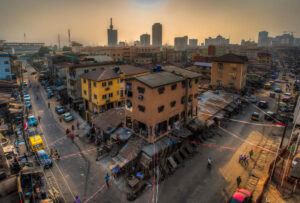
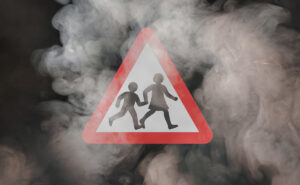

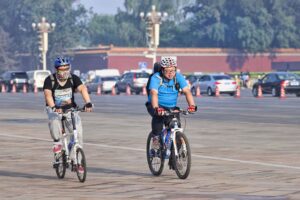
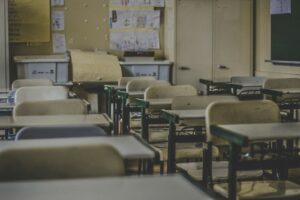
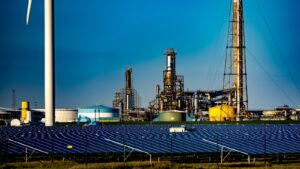

The article is very informative thanks.
Hyperledger Development